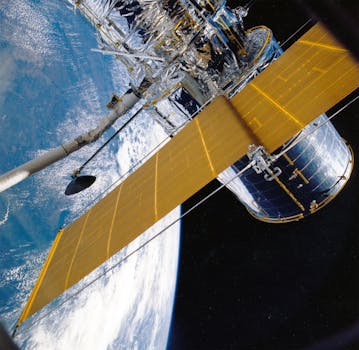
Beyond Earth: How Recent Advances Are Shaping Satellite Telecommunications
Satellite telecommunications, Satellite telecommunications have come a long way since the launch of the first commercial communications satellite, Intelsat 1, in 1965. Today, satellite technology plays a vital role in global communications, enabling connectivity in remote and underserved areas, as well as providing critical services such as navigation, weather forecasting, and disaster recovery. Recent advances in satellite telecommunications are shaping the future of communication beyond Earth, and this article will explore the latest developments and innovations in this field.
Introduction to Satellite Telecommunications
Satellite telecommunications involve the use of artificial satellites in orbit around the Earth to transmit and receive signals. These signals can be used for a variety of purposes, including telephone, internet, and television communications. Satellites are particularly useful for providing connectivity in areas where traditional terrestrial infrastructure is lacking or non-existent. They can also be used to provide backup communications services in the event of a disaster or outage.
Recent Advances in Satellite Technology
Several recent advances have significantly improved the capabilities and efficiency of satellite telecommunications. One of the most significant developments is the launch of high-throughput satellites (HTS), which offer faster data speeds and greater capacity than traditional satellites. HTS satellites use advanced technologies such as spot beams and frequency reuse to increase their capacity and reduce interference. Another important development is the introduction of low-Earth orbit (LEO) satellites, which operate at much lower altitudes than traditional geostationary satellites. LEO satellites have several advantages, including lower latency, higher data speeds, and improved reliability.
Applications of Satellite Telecommunications
Satellite telecommunications have a wide range of applications, including connecting remote communities, providing backup communications services, and enabling global navigation. Satellites are also used for weather forecasting, disaster recovery, and scientific research. The use of satellite telecommunications is expected to continue to grow in the coming years, driven by increasing demand for connectivity and the need for reliable and efficient communications services.
Conclusion
In conclusion, recent advances in satellite telecommunications are shaping the future of communication beyond Earth. The launch of HTS and LEO satellites has significantly improved the capabilities and efficiency of satellite technology, enabling faster data speeds, greater capacity, and improved reliability. As the demand for connectivity continues to grow, satellite telecommunications will play an increasingly important role in providing critical services and connecting remote and underserved communities.



